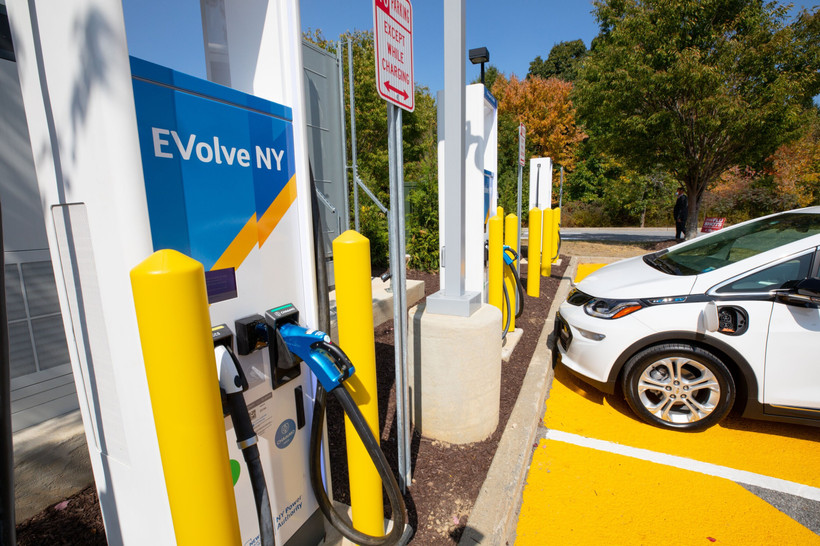The Thruway Has Brand New Rest Stops. Where Are the EV Chargers?
They’re on their way, officials promise. But they’re years late.

They’re on their way, officials promise. But they’re years late.

I hope this article helped you better answer the question that guides all of our journalism: Who runs New York? Before you click away, please consider supporting our work and making more stories like this one possible.
New York state is standing at a crossroads for climate action. After passing one of the nation’s most ambitious climate laws in 2019, the state is lagging far behind on its targets, struggling to meet deadlines to build renewable energy and clean up its buildings and roads. Other states are closely watching our progress, making decisions about their own climate plans based on New York’s ability to implement this legislation.
As New York’s only statewide nonprofit news publication, we’ve been scrutinizing the state’s climate progress. Our journalism exists to unpack how power works in New York, analyze who’s really calling the shots, and reveal how obscure decisions shape ordinary New Yorkers’ lives.
But we can't do this work without your help. We rely on reader donations to help sustain our outlet, and every gift directly allows us to publish more pieces like this.
Our work has already shown what can happen when those with power know that someone is watching, with my reporting prompting a state investigation and fine for a major corporation. I have more story ideas than I can count, but only limited resources to pursue all the leads that come across my desk.
If you’re able, please consider supporting our journalism with a one-time or monthly gift. Even small donations make a big difference.
Thank you for reading.


Chip technology has been standard in credit and debit cards for a decade. It could stop New York’s surging rate of stolen benefits.
Prosecutors have urged the governor to roll back some of New York’s discovery reforms. Public defenders worry about reverting to a time when they had to fight their cases “blindfolded.”
The governor’s proposal could make it easier to cancel your gym subscription — but harder to cancel your phone or internet plan.
“I really felt like the carpet was ripped out from underneath us,” said one county official. The state still hasn’t fully explained why it put HEAP on hold so suddenly.
The HEAP program abruptly closed to applications in January, months ahead of schedule. It has since reopened, but key questions remain about why it shut down so suddenly in the first place.
A $1,700 Bills suite tab was paid with campaign funds, bipartisan support for clean water funding, and New York’s top court upheld a man’s conviction despite his negligent lawyer.
Our team will be descending upon Albany on Tuesday. Here’s what they’ll be watching.
New York Focus reporter Sam Mellins reflects on what he learned this year, and teases what lies ahead for 2025.
New York has a little-noticed tool to shift billions of highway dollars to climate-friendly public transit projects. The governor doesn’t seem interested.